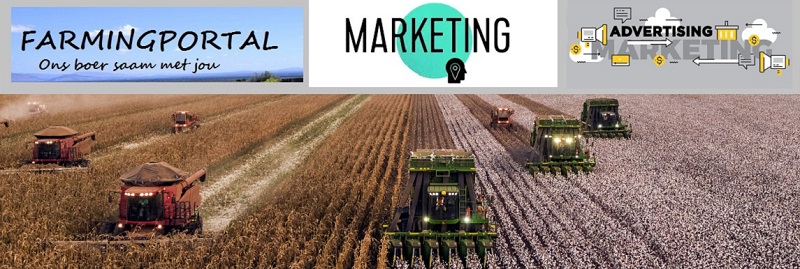But thousands of modern, high-yielding farms use no agricultural chemicals at all.
The four Lundberg brothers of Chico, California, have a 2000-acre organic rice farm. Some of their fields have not seen a pesticide for 15 years.
Del Ackerlund farms 760 acres of corn, oats, alfalfa, and soybeans near Valley, Nebraska. He hasn’t used fertilizers or pesticides in 19 years.
The Pavich brothers grow 640 acres of table grapes in Delano, California, and 900 acres of grapes, cotton, and melons near Phoenix, Arizona, all without chemicals.
Ben Brubaker’s 300-acre corn, hay, small-grain, and cattle operation in Kutztown, Pennsylvania, has been organically farmed for 16 years. All these farmers are prospering.
How do they do it? By using every technique they know, except the spraying of pesticides.
Relay-cropping, for example, controls weeds without herbicide. Last August I stood in a weed-free relay-cropped soybean field in Pennsylvania. In the spring the soybeans had been drilled right into a greening-up crop of winter barley. The barley ripened and was combined off in July, leaving the soybeans to make a fall crop. Two harvests a year, with the crops so dense there was never enough space for a weed to get going.
Other weed control methods include plain old tilling, ridge-tilling, mowing, mulching, cover-cropping, flaming, and above all, crop rotation. Planting the same crop at the same time year after year allows a buildup of weeds. Switching crops and planting times keeps any single weed from getting established.
Crop rotation helps control insects too. So does good soil. Just as healthy people are less likely to catch colds, healthy plants are less likely to host bugs. Healthy plants come from soil full of humus and microbes, many of which attack plant pathogens.
Organic farmers are fanatic about their soil. The Lundbergs refuse to burn rice straw as their neighbors do; they return it to the soil. Craig Gardner, an organic apple grower in Sebastopol, California, is doubling the humus content in his orchard with composted apple pomace and manure. Gregg Young, an agricultural consultant in California, has found that high soil calcium levels help control nematodes, fire blight, and grape bunchrot.
Organic farmers encourage natural predators: ladybugs to eat aphids, brachonid wasps to parasitize tomato hornworms, bacillus thuringiensis to infect cabbage worms. They use traps, such as sticky red balls in orchard trees to attract apple maggot fly. They interplant repellants, like catnip or tansy herbs around squash plants to repel cucumber beetles. They plant resistant varieties.
They know what they’re doing. Knowledge is the most important input to modern organic farming — knowledge of how to harness free natural processes instead of expensive chemical ones.
 US food pesticides contaminated with toxic ‘forever chemicals’ testing finds
US food pesticides contaminated with toxic ‘forever chemicals’ testing finds
Lack of knowledge is the main reason why organic agriculture is practiced on only about 1% of the farms of North America and Europe. Most of the sources of farmers’ information — journals, ag schools, extension services, advertisements — push chemicals. Monsanto can sell an herbicide and then a genetically-engineered soybean resistant to that herbicide. It can’t sell the idea of relay-cropping.
Only recently has the knowledge situation changed. Several land grant universities, such as Nebraska, Michigan, and Pennsylvania, are doing serious research on organic methods. The California legislature has appropriated special funds to the University of California for that purpose. Rodale Press puts out a journal on low-input agriculture called New Farm.
The International Federation of Organic Agriculture Movements (IFOAM) allows worldwide exchange of information on organic practices. IFOAM’s most recent conference in August 1986, was attended by 400 people, from every continent except Antarctica.
I was one of them. I listened to presentations on organic farming, small-scale and large, in warm climates and cold. I was impressed by how far this technology has come, with so little help from governments, universities, or industry. The basic crops, most grains, many vegetables, give high yields with no pesticides now. For some special crops, fruits, some tropical situations, more research and experimentation are very much needed.
The world’s farmers pay $12.8 billion per year for pesticides. That is the direct cost — the indirect costs are contaminated groundwater, disrupted ecosystems, industrial accidents like Bhopal, hazardous waste dumps, poisoned farmworkers, costly regulatory systems, and increasingly resistant pests.
Those costs are not the price we have to pay to feed the world. They are the price of clumsy technology, blasting the environment with poisons, rather than working knowledgeably with nature’s methods of controlling pest populations.
Pesticides could probably be reduced by a factor of ten worldwide, with no loss in yield, using already-proven organic methods. With more research — even a fraction of the research that goes into developing new pesticides — they could probably be eliminated altogether.
here are few human activities that have changed the world’s landscapes and environment more than farming. Fields of crops and pastures for animals occupy an extraordinary 40% of available global land. But the way we grow food on these vast swathes of land is putting increasing pressure on nature.
Growing demand for food has polluted much of the world’s water, soil and air with excess fertilisers and chemical sprays, which are remarkably inefficient. Up to 98% of a crop spray won’t stay on the plant but will instead bounce straight off, accumulating in the soil and eventually running off into waterways. At the same time, conversion of land from wild spaces to farming is driving biodiversity loss, as wild plants and animals have less space to live in.
Is it possible to transform the way we farm so that agriculture doesn’t compromise the natural environment? Because of the sheer scale of the world’s agriculture, it seems like a gargantuan task. But farmers and researchers are already developing the tools that will be needed to make it happen. Technology, used wisely, is one of them.
Many new innovations have the potential to redesign global food systems to make them sustainable. Some of them come from unexpected quarters. Bees can be surprisingly efficient and accurate crop sprayers. Clever chemistry can help get more pesticide to stay on target, drastically reducing pollution. Meanwhile, some types of indoor agriculture can produce more food in a fraction of the space used by conventional farming, leaving more space for nature outdoors.
Creating new and sustainable food systems that can support the world’s population is going to mean rethinking the fundamentals of farming, from the resources used, to where it happens and its basic relationship with nature.















